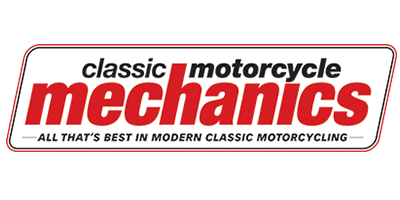In my first article about investment grade classic motorcycles, I left two questions unanswered, because they require an entire article to be answered fully.
Prior to answering these questions, bear in mind the fundamentals of owning an investment grade classic motorcycle. Desirability is the key to the make and model of your investment. Also availability is key. If there were only a limited number of such machines available in the first place and supply was outstripped by demand when they were produced, then you are looking at a sound investment. Does the motorcycle have heritage, such as racing provenance? For example, if it was a homolgation, limited edition, version and that model won the World Superbike series, then you are looking at something rare and special. If the motorcycle is then unique, like being the first off the production line, or being owned by someone famous and there’s provenance to prove it, then it is going be a cast iron investment. Barry Sheen’s Suzuki GS1000 will always have a premium over a standard GS1000, if it comes with cast iron provenance.
The two questions remaining unanswered from part one of this article were-
- • Has the motorcycle been restored, or is it original?
- • If the motorcycle has been restored, was it done sympathetically with respect to the original finish?
Has the motorcycle been restored or is it original?
To answer this, I will start by giving a checklist of different investment grade classic motorcycles starting with the most desirable first.
- 1. Brand new, unrestored, immaculate, unregistered and completely standard. Even more so if the motorcycle is unique is some way, such as first off the production such as this Ducati 996 SPS. There is only one of these motorcycles in the world.
- 2. Used, low mileage, completely unrestored and 100% original, every nut and bolt standard and as it left the factory, like this Honda CB750K0.
- 3. A fully restored classic motorcycle, which could pass as an unrestored motorcycle, as it left the factory. All components original, but re-finished with such empathy to the original finish, it looks like it has never been restored. A truly great restoration is an artful forgery of the factory finish. Such works of art are very rare indeed.
- 4. Used, completely original, low mileage, but in need of some light, cosmetic restoration requiring no new parts, such as this Yamaha DS7 from 1972. It’s a simple, light restoration that costs only some time and materials, but not original components that are difficult, or expensive to source. There is also a Honda CBX1000 that only just falls into this category, as any restoration work required is so light and the motorcycle is very, very original.
- 5. A concourse, better than new motorcycle. Many people refer to such classic motorcycles as over-restored. They look fantastic, better than new, but they just don’t look or feel anything like an original classic motorcycle. They can be very good as a classic motorcycle investment to ride regularly.
- 6. A classic motorcycle, which has every component original, but requires complete re-finishing, such as chrome, or paint. Such classic motorcycles are very good restoration projects, because, although they require immense time to strip, re-finish and rebuild, they offer flexibility regarding how you want to restore your classic motorcycle and to what investment grade. You will also have an approximate idea
- 7. A complete, full ground up restoration, the motorcycle requires numerous parts some available, some not and the engine is an unknown quantity until you strip it down. These motorcycles are such unknown quantities. When anyone asks me to restore such a classic motorcycle, I am unable to even give an estimate. Read this article @@@@@@ to see why. I know someone who has just finished a concourse restoration of a Honda CBX1000 that cost over £20,000 to buy and restore and that is without them charging for their labour. That was parts, refinishing, buying the donor motorcycle and paying specialist to repair a very expensive second hand original exhaust. Which is why the Honda CBX1000 will command far higher values in the future. They are a great classic motorcycle investment.
Let’s look at the second unanswered question. If the motorcycle has been restored, was it done sympathetically with respect to the original finish?
Using Honda, Suzuki, Yamaha and Kawasakis from the 1970s and 1980s as an example, I will be as concise as possible. These machines were produced with steel spokes in their wire wheels, not stainless steel spokes. They came with Philips screws, as a generalisation, to hold the engine crankcases together, not stainless steel allen bolts. The frames were either sprayed with enamel or cellulose paint, not powder coated or modern, water based paints.
So it all sounds a bit picky really doesn’t it? But even classic car enthusiasts talk of classic cars often being over-restored. Let’s look at each of these and then see how, together, they really do change the feel and appearance of the classic motorcycle in question.
Steel spokes tarnish and then corrode, true, and stainless steel spokes do not. However those old steel spokes are a dull grey finish and stainless give a shiny, almost chrome finish. The difference between stainless allen key bolts and steel Philips screws is that the allen screws are tidier, more modern. Yet the original patina of the motorcycle was not that tidy. Japanese manufacturers use such fastenings now, but they did not during the era of the gorgeous machines. It just looks incongruent, when you see the original motorcycle next to the same, restored motorcycle.
The frames were sprayed, using the minimum amount of paint required to cover the structure, with no attention to finish. Quite often they were not even compounded after spraying, with just a dull gun finish from gloss finish black paint. Powder coating is thicker, shinier and just looks modern, nothing like the original finish. Also, when you tighten the engine bolts onto powder-coated engine mounts, the bolts can’t grip, because the finish is so smooth. So the engine mounts are over-tightened to overcome the vibration from the loose engine bolts. The bolts tear the powder-coat and the weather lifts the powder-coat over time and the entire finish degrades very rapidly.
Modern water based paints just do not look like cellulose paints from the 1970s and 1980s, such as petrol tanks and side panels. You can still get cellulose paints- just- but you cannot get cellulose lacquers any more. Such lacquers also regularly reacted with the decals, which was frustrating and costly to say the least. There are two solutions, the first is to use cellulose base colour and a two pack lacquer- which is also becoming increasingly difficult to find. The only modern lacquer that is petrol-proof is two-pack, so there is little choice in lacquers when spraying petrol tanks. The problem with this method is that cellulose does not adhere well to two-pack and after a couple of years the lacquer can crack. The only other alternative is to use two-pack base coat with two-pack lacquer, but it can look a little too shiny, unless you use some masterful tricks. Having an understanding painter is pre-requisite, or spraying the components yourself, if you know the tricks. All too often I see stunning looking Z900s in slightly the wrong hue, gleaming body panels with oceans of mirror smooth lacquer on the body panels. Pretty, yes, but anything like the original? No. The original always looks best.
There are very few restorers who treat such problems as a challenge. It becomes an art form, to forge the original factory finish, and it is worth the extra time and cost. It is also critical to use the correct colour primer and to lay the base on thin- against all the instincts of anyone with a spray gun in their hand. Also, these machines hit the road with an orange peel finish to their lacquer, so no compounding, just a straight from the gun finish.
As the values of these emerging market classic motorcycles increases and they become even harder to source, I believe that authenticity will be critical whether the motorcycle is restored or not. When I know a motorcycle has been restored in any way, even if it’s invisible, I always declare what work has been done. I also make sure that my selling clients declare any work in writing that they know was undertaken.
One thing is for sure. These emerging market classic motorcycles are one of the best performing alternative investments and will outshine all others in the long term. Especially when China allows motorcycle importing to resume. The investment grade motorcycle will be the investment of choice to collectors and the market is already moving rapidly in that direction.
- Most collectible Ducati 916 SP - June 20, 2024
- Classic Motorcycles: To ride or not to ride? - June 17, 2024
- Classic Motorcycles: To ride or not to ride? - June 17, 2024







